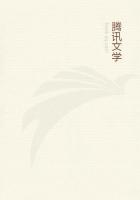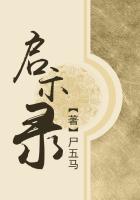The influence of Scopas and Praxiteles continued to be felt through a number of artists who worked in sufficient harmony with them to be properly called of their school. To one of these followers of Praxiteles, some say as a copy of a work of the master himself, we must attribute the Demeter now in the British Museum. This is a pathetic illustration of suffering motherhood. There is no exaggeration in the grief, only the calm dignity of a sorrow which in spite of hope refuses to be comforted.
Another work of an unknown artist, probably a follower of Scopas, is the splendid Victory of Samothrace, now in the Louvre. The goddess, with her great wings outspread behind her, is being carried forward, her firm rounded limbs striking through the draperies which flutter behind her, and fall about her in soft folds. Vigorous and stately, the goddess poises herself on the prow of the ship, swaying with the impulse of conquering daring and strength.
Another statue which belongs, so far as artistic reasoning may carry us, to the period and school of Praxiteles, is the so-called Venus of Milo. The proper title to be given to this statue is doubtful, for the drapery corresponds to that of the Roman type of Victory, and if we could be sure that the goddess once held the shield of conquest in her now broken arms we should be forced to call the figure a Victory and place its date no earlier than the second century B.C. However this may be, the statue is justly one of the most famous in the world. It represents an ideal of purity and sweetness. There is not a trace of coarseness or immodesty in the half-naked woman who stands perfect in the maidenly dignity of her own conquering fairness. Her serious yet smiling face, her graceful form, the delicacy of feeling in attitude and gaze, the tender moulding of breast and limbs, make it a worthy companion of the Hermes or Praxiteles. It seems scarcely possible that it should not have sprung from the inspiration of his example.
The last of the great sculptors of Greece was Lysippos of Sikyou.
He differed from Pheidias on the one hand and from Polycleitos on the other. Pheidias strove to make his gods all god-like;Lysippos was content to represent them merely as exaggerated human beings; but therein he differed also from Polycleitos, who aimed to model the human body with the beauty only which actually existed in it. Lysippos felt that he must set the standard of human perfection higher than it appears in the average of human examples. Hence we have from him the statues of Heracles, in which the ideal of manly strength was carried far beyond the range of human possibility. A reminiscence of this conception of Lysippos may be found in the Farnese Heracles of Glycon, now in the Museum of Naples. Lysippos also sculptured four statues of Zeus, which depended for their interest largely on their heroic size.
Lysippos won much fame by his statues of Alexander the Great, but he is chiefly known to us by his statue of the athlete scraping himself with a strigil, of which an authentic copy is in the Vatican. The figure differs decidedly from the thick-set, rather heavy figures of Polycleitos, being tall, and slender in spite of its robustness. The head is small, the torso is small at the waist, but strong, and the whole body is splendidly active.
The changes in the models of earlier sculptors made by Lysippos were of sufficient importance to give rise to a school which was carried on by his sons and others, producing among many famous works the Barberini Faun, now at the Glyptothek, Munich. The enormous Colossus of Rhodes was also the work of a disciple of Lysippos.
But from this time the downward tendency in Greek art is only too apparent, and very rapid. The spread of Greek influence over Asia, and later, in consequence of the conquest of Greece by Rome, over Europe, had the effect of widening the market for Greek production, but of drying up the sources of what was vital in that production. Athens and Sikyou became mere provincial cities, and were shorn thenceforth of all artistic significance;and Greek art, thus deprived of the roots of its life, continued to grow for a while with a rank luxuriance of production, but soon became normal and conventional. The artists who followed Lysippos contented themselves chiefly with seeking a merely technical perfection in reproducing the creations of the earlier and more original age.
At Pergamon under Attalus, in the last years of the third century, there was something of an artistic revival. This Attalus successfully defended his country against an overwhelming attack of the Gauls from the north. To celebrate this victory, an altar was erected to Zeus on the Acropolis of Pergamon, of which the frieze represented the contest between Zeus and the giants. These sculptures are now to be found in Berlin. They are carved in high relief; the giants with muscles strained and distended, their bodies writhing in the contortions of effort and suffering; the gods, no longer calm and restrained, but themselves overcome with the ardor of battle. Zeus stretches his arms over the battle-field hurling destruction everywhere.
Athene turns from the field, dragging at her heels a young giant whom she has conquered, and reaches forward to the crown of victory. The wild, passionate action of the whole work remove it far from the firm, orderly work of Pheidias, and carry it almost to the extreme of pathetic representation in sculpture shown by the Laocoon.














